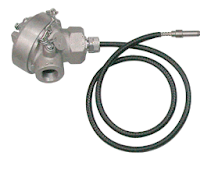Conval Clampseal® Valves are much easier to renew than anything else on the market. This video is seventh and final video in a series demonstrating how to service Clampseal valves.
https://psi-team.com
800-223-1468
Piping Specialties Inc. (PSI) is one of the northeast's largest suppliers of valves; process controls/instrumentation, and engineered mechanical specialties. Industries served: Power Generation, Pulp/Paper, HVAC, Water/Wastewater, Food/Beverage, Life Sciences, Chemical/ Process, Semiconductor. For more information visit PSI-Team.com or call 800-223-1468.
 |
| Magnetic Level Gauge (Penberthy) |
 |
| Under the same process conditions, the competitor’s valve underperformed and required frequent maintenance due to erosion. |
 |
| After one year the MOGAS valve performed 818 successful cycles—over four times the cycle count required in this application. |
 |
| Actuator being positioned on large ball valve. (Piping Specialties) |
 |
| Rack and pinion actuators. (Flo-Tite) |
 |
| Automated valves ready for shipment. |
 |
| Process refractometer (K-Patents) |

 In all cases, the operation of a measurement instrument should be referenced, or traceable, to a universally recognized and verified measurement standard. Maintaining the reference path between a field instrument and a recognized physical standard requires careful attention to detail and uncompromising adherence to procedure.
In all cases, the operation of a measurement instrument should be referenced, or traceable, to a universally recognized and verified measurement standard. Maintaining the reference path between a field instrument and a recognized physical standard requires careful attention to detail and uncompromising adherence to procedure. Understanding industrial control valve design and operation is very important if you work as a process engineer, a plant maintenance person, or if you design process control loops.
Understanding industrial control valve design and operation is very important if you work as a process engineer, a plant maintenance person, or if you design process control loops.
 |
| Industrial thermocouples (Marsh Bellofram TCP) |
 |
| Industrial RTDs (Marsh Bellofram TCP) |
 |
| High Performance Butterfly Valve (Pratt Industrial) |
 |
| Internal view of a ball valve (MOGAS) |
 |
| 2-piece and unibody ball valves (Flo-Tite) |
 |
| Internal view of rack and pinion actuator (UniTorq) |
 |
| Rack and Pinion Animation |
 |
| Rack and Pinion Actuator (UniTorq) |